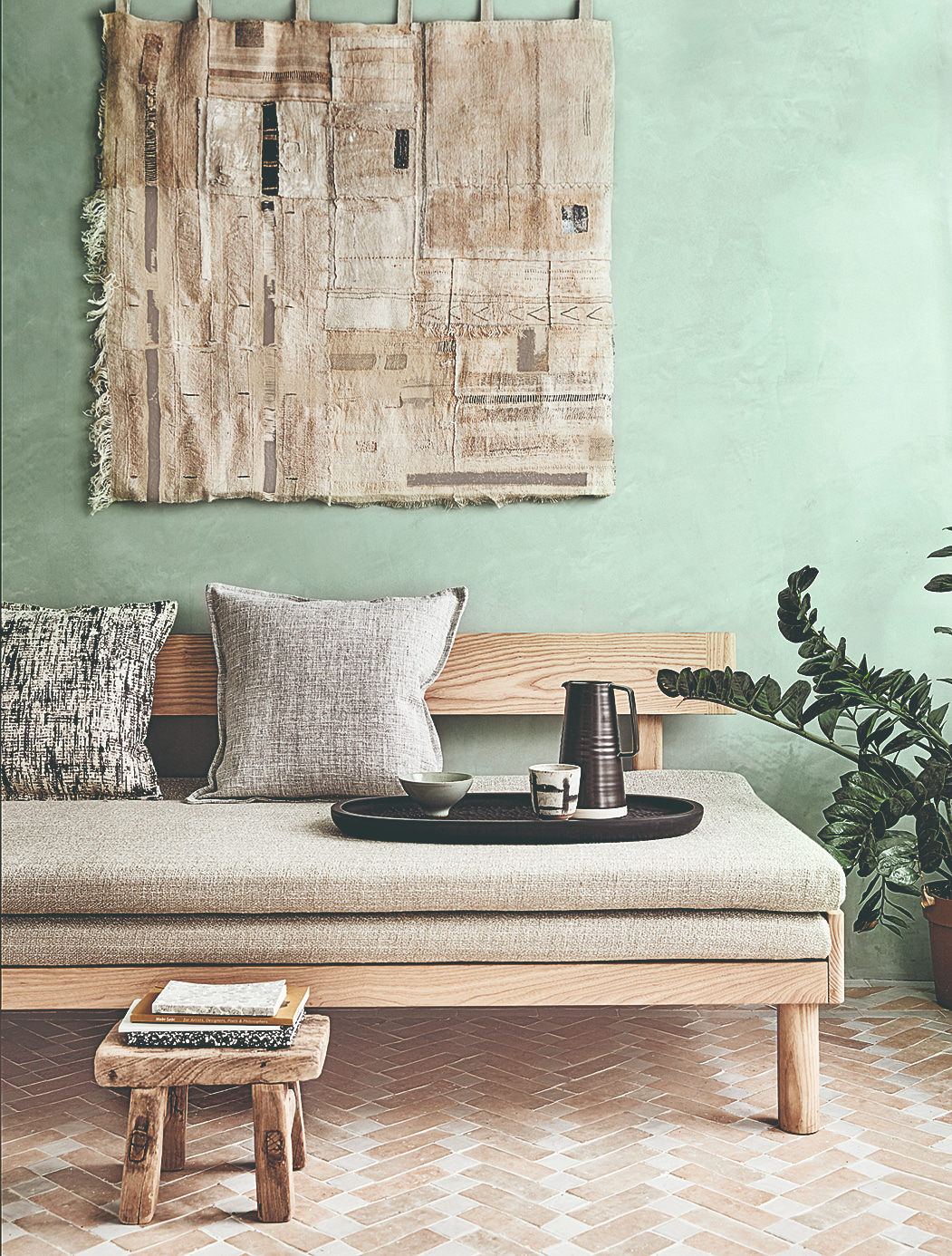AI in interior design – this is how designers are making use of the new technology
Artificial intelligence is everywhere these days, and the interior design industry is no exception. Here's what designers have to say about how their work has changed


Interior design is a personal process, rooted in human experience – while a good designer curates a beautiful space, a great designer ensures that said space makes daily life easier and more enjoyable for the people using it. Still, technology has always aided interior designers, making particular parts of the process more accessible and inspiring.
The rise of AI technology has permeated many industries, and while some are leaning into the cutting-edge features, others fear for the impact it might have on their industries – and their livelihoods. The interior design industry is no exception, and AI has slowly but surely made its way into the work of many designers. And though many of their reactions reflect those of other creatives, AI has impacted interior design in unique ways.
Often, AI makes its way into creative industries without much say from the artists and designers who make up the workforce, and many interior designers have simply had to roll with the punches. To get a better sense of how the experts have been impacted by AI – and how they think the future will unfold – we spoke with interior designers, plus the people behind AI-powered design technology. This is what they had to say about the ever-evolving technology, and how working with an interior designer has changed for the client.
How has AI changed interior design?

Though mainstream AI technology is fairly new, it's already made major strides in the interior design industry, and designers are doing their best to adapt. From AI-powered websites and apps making the design process more accessible to homeowners to enhanced software available to experts during the design process, quite a bit has been impacted – if imperfectly – by AI thus far. According to designers, this new technology has been most helpful during the beginning stages of design projects.
'AI has been a great tool for our team during the conceptual stage. When drawing out design solutions our team will often plug our sketches into AI for a more hand-drawn detailed perspective to share with our client. These visuals help guide the design direction before investing more time in rendering out the space in greater detail,' say Kristine Renee and Deborah Costa, co-founders of Design Alchemy.
Though not replacing professionals' roles in the design process, AI is streamlining the beginning stages of projects, making collaboration between designers and clients run smoothly. And though there are absolutely aspects of AI technology that designers aren't too pleased with, the ability to shuffle through baseline ideas has become easier as a result.
Emma Beryl, interior designer and founder of her eponymous design firm, says AI helps her and clients flesh out ideas at the start of a project by generating ideas and compiling them together.
Design expertise in your inbox – from inspiring decorating ideas and beautiful celebrity homes to practical gardening advice and shopping round-ups.
'Obviously, clients can use AI to generate ideas and create spaces they like, but this isn’t a negative – it can be super helpful in ensuring the design team and the client are on the same page making the end result even better,' she says.
What problems might AI cause for interior designers?

Despite its ability to render images and organize ideas, some designers say the services AI provides aren't the best fit for their work. Peter Spalding, interior designer and co-founder of Daniel House Club, says that AI's 'amazing photorealistic renderings' offer a vague impression of what a project might look like at the end of the process, but that doesn't necessarily serve the designer or client well.
'Photorealistic presentation is really important in architecture, but I am less convinced of its helpfulness in interior design. Interior design and decoration is like painting. You go out and get the supplies for your palette and start painting. You shift things around and mix them up until something really starts to sing,' says Peter.
Peter adds that Sister Parish, a renowned 20th-century interior designer, took a nontraditional approach to furniture arrangement, often placing and repositioning furniture within a room until the look was just right. Trying to mimic a photorealistic AI image means that a lot of this experimentation and creative touch, a vital part of the design process, is more likely to be lost.
'There’s a lot that gets lost in a photo – some ideas will work and some will need to be adjusted in real time. Something you’ve laid out symmetrically may actually be better a little off-kilter. The client needs to understand this journey – there is nothing worse than having them fall in love with a picture that may not actually be the best solution once you get into the weeds,' Peter says.
Should designers use AI or avoid the new technology?

As AI becomes more mainstream, it's ultimately up to designers whether or not they'd like to use the technology in their workflow – and there are split opinions within the industry.
Some, like Jessica Cinnamon – interior designer and founder of Jessica Cinnamon Design – say they're steering clear of AI for now. In fact, Jessica says AI really hasn't impacted her team at all as of now, though she expects it might down the line.
'Our clients come to us not only for the design expertise, but also for the overall experience. Design is personal, and we work closely with our clients to design homes, offices, condos, and more that surpass their expectations,' she says.
Others say that clients have driven the inclusion of AI in the design process. Abby Hetherington, principal designer and founder of Montana-based Abby Hetherington Interiors, recalled a recent meeting where a prospective client simply pulled out their phone and altered designs using AI to show the team what they were looking for.
'AI is something we can’t fight, and designers need to learn how to use it to our benefit. On the one hand, it was great to be on the same page about what they were looking for and aligning on a concept. We ask our clients to show us inspirations and Pinterest boards for their projects, so AI is like another piece of the puzzle,' she says.
While this unexpected encounter allowed Abby's team to get a near-immediate visual sense of the client's wants and needs for the space, she says that this use of AI has the potential to take away from the work that she and her colleagues have trained and studied for years to do successfully. But whether AI will ever be able to truly rival the human touch is still yet to be seen.
'This type of quick "design" is unrealistic if clients expect the process to be fast because AI is fast – it devalues our work. Good design takes time and a human touch, so setting expectations up front will be necessary moving forward,' Abby says.
What AI tools are available to homeowners?

As AI has grown in popularity and accessibility, interior design services catered to homeowners and amateur designers have cropped up, offering new routes for design inspiration nearly everywhere we look. Corban De La Varga, chief marketing officer of DecorMatters, explains how this AI-powered design site uses the technology to bring interior design to its users.
'DecorMatters is a revolutionary platform that leverages AI to transform the traditional interior design process into a fun and engaging room design app and gaming experience. Through the power of AI, this app delivers personalized design recommendations and automates decision-making. Both clients and designers can create one-of-a-kind designs that cater to their preferences and needs, all while saving a significant amount of time, money, and energy,' says Corban.
Available for designers embarking on new projects or those with the desire to design from home, DecorMatters lets people experiment with layouts, furniture styles, lighting and more, says Corban. He adds that new AI features are in the works too, such as a 'template creator tool' that will 'offer users the ability to personalize and streamline the design process by creating a variety of room templates based on image prompts.'
Plus, Corban shares that DecorMatters' team is comprised of some interior designers, adding that feedback and suggestions from the experts were integrated every step of the way. He says that tools like these are meant to help designers make the most of their creativity, not meant to take away from the work they do.
'AI is transforming the interior design industry by enabling designers to create more personalized, efficient, and precise designs. By harnessing the power of AI-driven technology, designers can focus on unleashing their creativity, while leaving the most tedious and repetitive tasks to the machines,' says Corban.
Will AI replace interior designers?

The penultimate question when it comes to AI often relates back to the workforce – will AI replace interior designers? And is it possible for this emerging technology make the human touch redundant? When it comes to interior design, the consensus is a resounding no.
Interior design is personal, creative, and bespoke, and though there's quite a bit yet to be seen as this technology develops, it can't yet rival the expertise of working professionals. And more importantly, for many, it's much more appealing to speak with a real-life designer who can truly tailor a project to your needs.
'I feel like AI has gotten a bad rap in many different industries as people fear it will replace a lot of jobs. However, in design, I feel like there is nothing like having a designer and their team show up in person and have conversations about anything from design styles to favorite places to eat. Having the human connection creates spaces that feel liveable and like home. AI just can’t get to that level of personal and professional relationship,' says Emma.
AI tools can help you conceptualize and plan an interior design project, but it's still best to turn to the professionals when embarking on a home renovation. If the designer you're working with is on board, bring in ideas and imagery that speaks to you, and you'll get the best of both worlds – human creativity combined with a touch of technology.

Abby was the Interior Design News Editor at Homes & Gardens and is now studying for her Master's degree in Journalism at City University, London. Prior to joining our team, she worked with Better Homes & Gardens, where she wrote and edited content about home decor, gardening tips, food news, and more. She studied Journalism and English Literature at New York University and moved to London to pursue her love of writing in 2023.